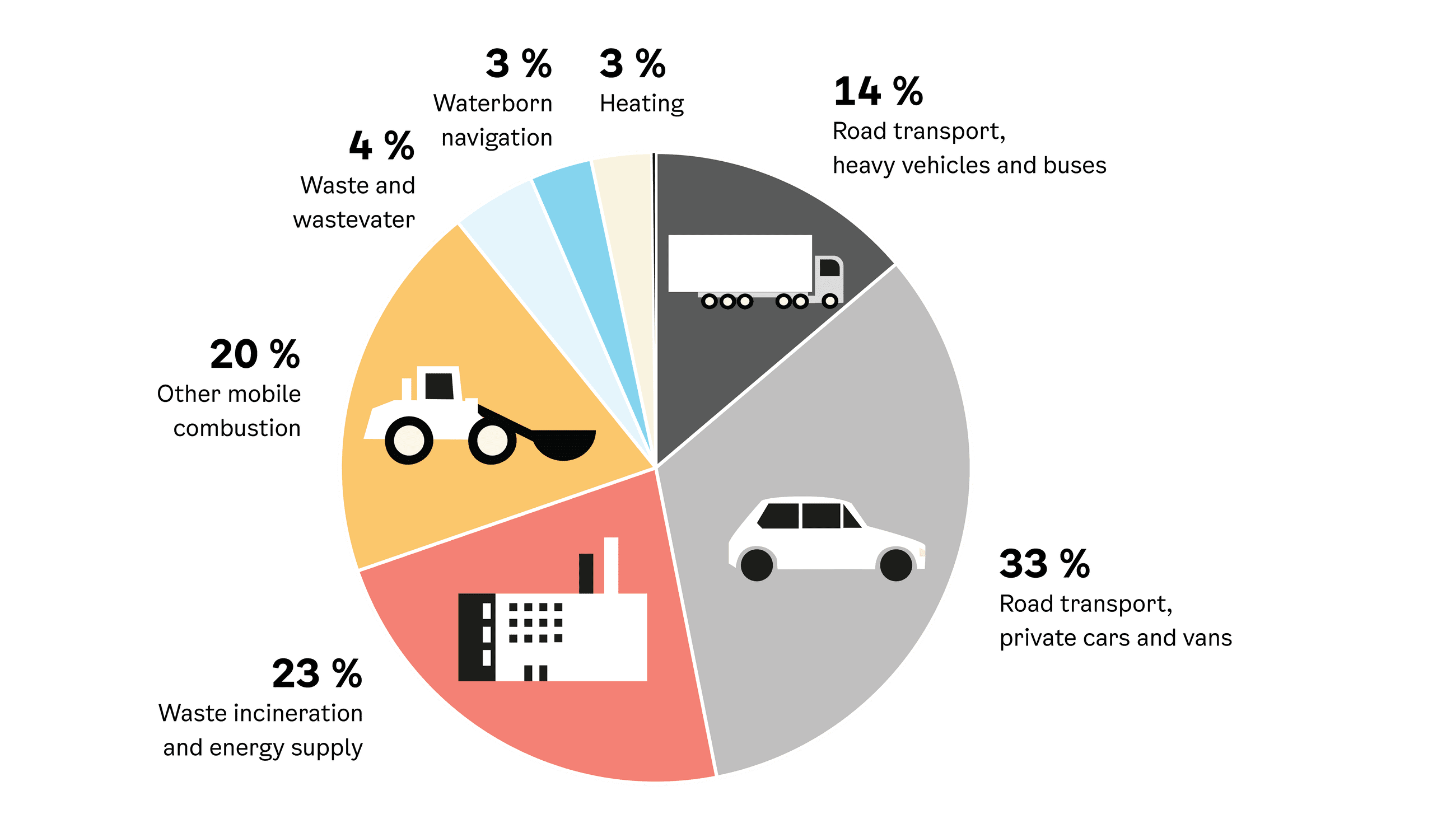

Takk for din påmelding.
Du vil nå regelmessig motta nyheter om Oslo.
Ha en fin dag :)
Hilsen oss i Oslo kommune
The Norwegian Environment Agency’s (NEA) greenhouse gas inventory for each municipality is the basis for the preparation of the climate budget. On 18 January 2022, the NEA published the updated greenhouse gas inventory for the municipalities, with a correction for the energy supply sector, which was sent by email to the Oslo Agency for Climate on 14 March 2022. The greenhouse gas inventory has new figures for 2020, and updated numbers for the time series back to 2009. This memorandum summarises and comments on the development of greenhouse gas emissions in Oslo from 2009 to 2020 and explains the changes that have been put in place since the last greenhouse gas inventory was published in 2021.
The greenhouse gas inventory shows that the greenhouse gas emissions in Oslo in 2020 amounted to approximately 1.08 million tonnes CO2 equivalents. This is a reduction of 5.2 per cent from 2019. In the period from 2009 to 2020 the greenhouse gas emissions have never been as low as in 2020 and compared with the 2009 level the emissions are down by 25 per cent.
Emissions from all sectors have been reduced between 2019 and 2020. For the waste and wastewater, industry, oil, and gas, aviation, heating, and road traffic sectors the emissions in 2020 were at the lowest level for the 2009 to 2020 period. Emissions from vehicular traffic declined by 4.9 per cent, corresponding to somewhat less than 30 000 tonnes CO2 equivalents, due to the increased proportion of electric cars and the addition of biofuel. Emissions from other mobile combustion dropped by 6.8 per cent and less than 10 000 tonnes CO2 equivalents. The calculation method for emissions from other mobile combustion is nevertheless uncertain, which makes it challenging to explain both the emission level and trends in the sector.

Greenhouse gas emissions in Oslo distributed according to emission sectors, 2020
Emissions from heating dropped by 21.1 per cent, corresponding to almost 6000 tonnes CO2 equivalents, due to a steep decline in the use of fossil heating sources. This decline is the result of the ban on oil-fired heating that has been in force as of 1 January 2020. Emissions from waste incineration and energy supply were reduced by 4.4 per cent, corresponding to approximately 12 000 tonnes of CO2 equivalents, and is generally due to reduced use of fossil energy sources in distant heating production.
The greenhouse gas inventory shows continuous improvement. Changes have been made to the methods used in this year’s published figures, but development is still needed. The NEA will continue its work in 2022. Adjustments may thus be expected in the figures to be published in December 2022. Adjustments that can be ascribed to changes in methods will affect the emissions in the whole time series, from 2009 to the most recent year with statistics.
